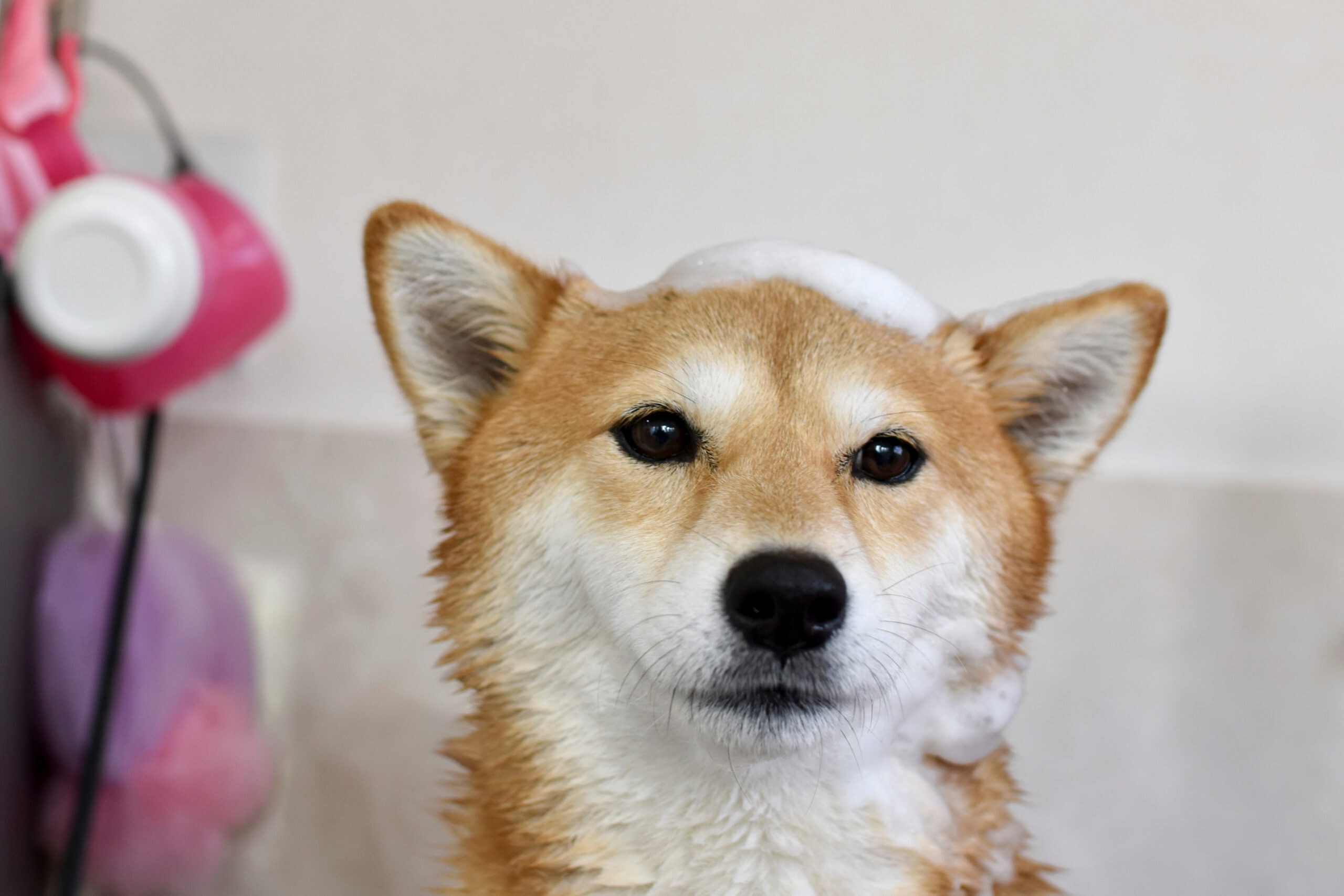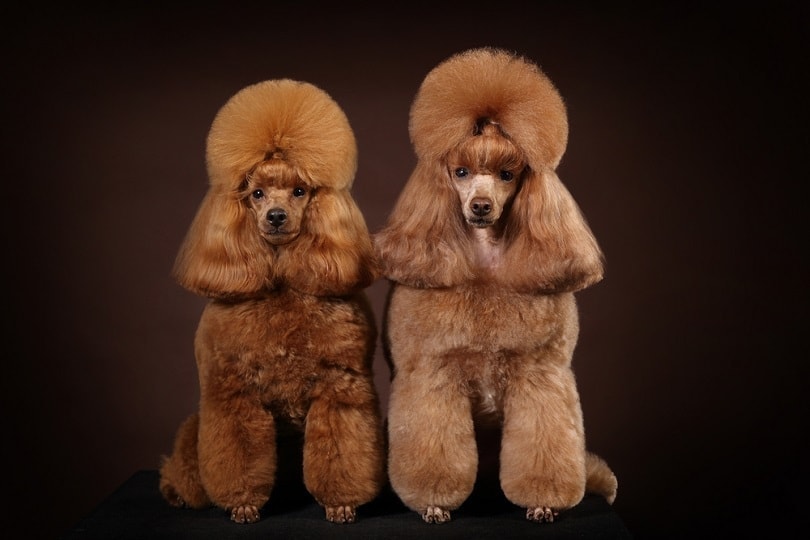Are Maltipoos Hypoallergenic? Important Facts & Tips

Updated on
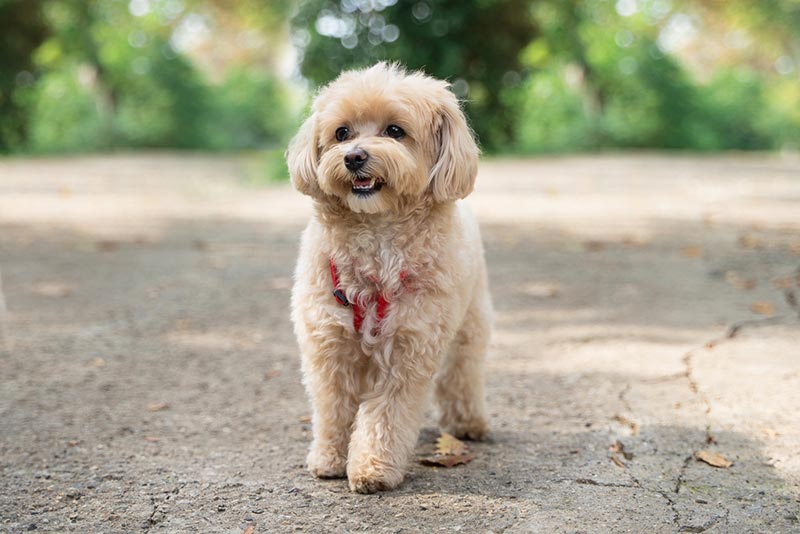
Click to Skip Ahead
A crossbreed of the Poodle and Maltese, Maltipoos are sweet, affectionate, loving, and generally adorable designer dogs. They have gained popularity in the canine world because of their small size and because they don’t shed a lot. And while no dog breed is truly hypoallergenic, Maltipoos do not produce dander as much as other dog breeds, making them closely hypoallergenic.
Read on to find out if a Maltipoo would be ideal to own, especially if anyone from your household suffers from dander and pet hair allergies.
When Is a Dog Considered Hypoallergenic?
Only hairless dog breeds are considered truly hypoallergenic because all dogs with a coat shed somewhat. But since dog breeds like Maltipoo only shed a little fur, they are classified as closely hypoallergenic dog breeds.
You might be wondering, what’s the difference between typical dogs that cause allergic reactions and dogs like Maltipoo that mostly don’t? Well, it all depends on the type of fur on the dog and how much dander is trapped by the fur. Since Maltipoos have very fine hair, any dander created by their skin tends to fall off and doesn’t accumulate to levels that can cause an allergic reaction.
Maltipoos are different from dog breeds like the German Shepherd that have excessively dry skin and thick fur. These tend to produce more dander and due to their thick fur, it’s trapped and doesn’t fall away. Even worse, German Shepherds shed more than Maltipoos, meaning the furs can retain more dander, and wherever the fur falls, it can be problematic for people prone to allergies.
If you are unsure whether you are allergic to dogs, some signs such as nasal congestion, sneezing, a running nose, watery and itchy eyes, postnasal drip, itchy skin, and coughing will help you determine whether your Maltipoo is the culprit.1
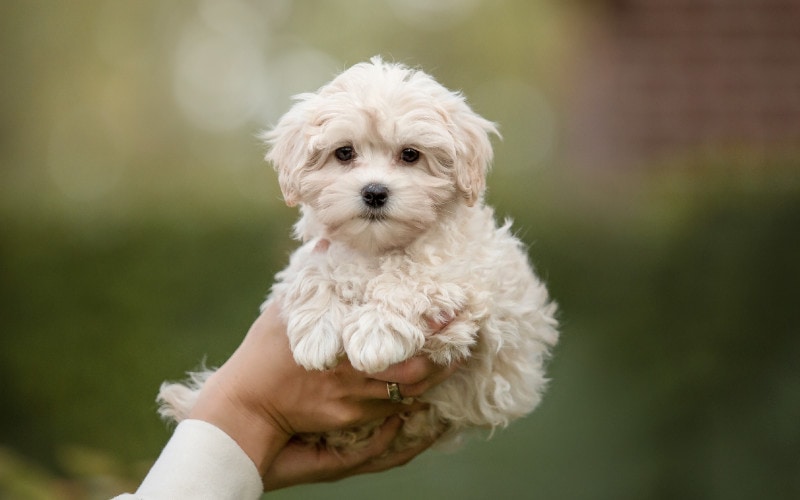
What Causes Allergic Reactions to Dogs?
For pet owners, one of the biggest challenges is allergic reactions to their furry friends. This is perhaps why many potential dog owners are always on the lookout for hypoallergenic dogs. Regardless of the dog breed or whether a dog has single or double fur coats, they all produce dander, which is the main cause of allergic reactions in humans.
- Dander – Dander is essentially small particles of dead skin produced by all dog breeds. It may often be mistaken for dust because of its minuscule particles. Humans react to dander the same way they do to foreign agents like viruses, bacteria, germs, and anything trying to cause harm to the body.
- Dog Saliva – While dander may be the main cause of allergic reactions to dogs, some people also react to the saliva from dogs. Even more specifically, their bodies react to the proteins found in canine saliva and urine. In fact, what triggers allergic reactions in Maltipoo is what the coat accumulates, including this urine and saliva.
You can easily get an allergic reaction by simply touching their toys or handling their food and water bowls.
The 7 Tips for Handling an Allergic Reaction to Maltipoos
As you may have gathered, Maltipoos have fewer allergic reactions when compared to other dog breeds. However, since hairy dog breeds produce some amount of dander, it’s not uncommon for some Maltipoo dog owners to suffer from allergic reactions from the breed.
If you have been given a Maltipoo puppy or adopted one and, to your alarm, realized that you might be having an allergic reaction to them, do not fret.
Here are a few things you can do to alleviate or eliminate your allergic reaction to your Maltipoo puppy.
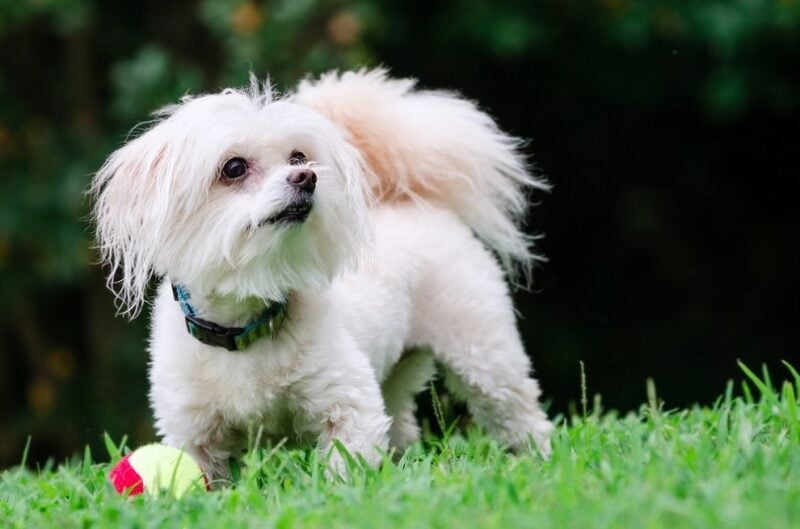
1. Before Adopting a Puppy, Test Your Allergy Tolerance
If you suspect or are worried that you are susceptible to allergic reactions from adopting a new Maltipoo puppy, one of the best ways to know for certain is to spend some time with the new puppy before taking them home. Usually, veterinarians recommend that you stay in contact with the puppy in an enclosed environment several times before attempting to adopt it.
If no allergic reactions happen, you can adopt the Maltipoo puppy or even another dog breed. However, some dog owners can develop allergies even after living with their dogs for some time.
2. Groom and Brush Your Dog’s Coat Outside
For many pet owners, allergic reactions happen when brushing or grooming their dogs. To eliminate or reduce the possibility of this reaction, consider brushing your dog outside in the open air. This will allow the fur and the dander to be blown away and limit concentration in an enclosed living space like a living room or kitchen.
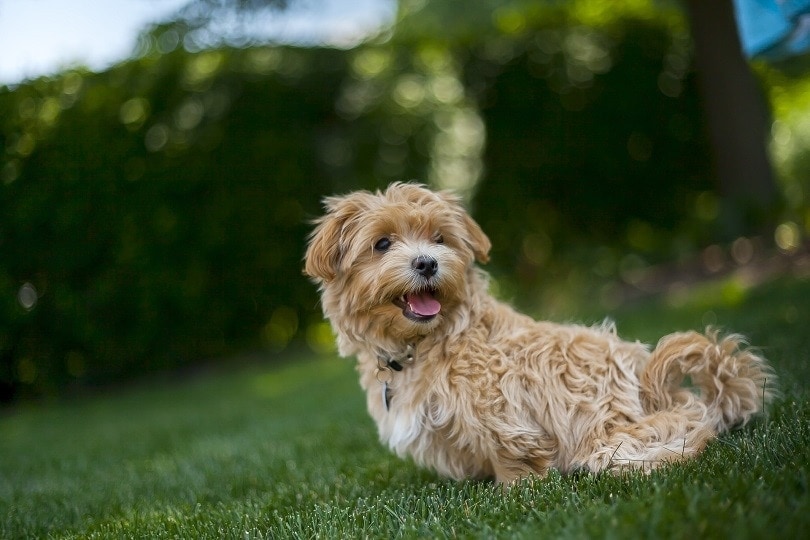
3. Delegate Grooming and Brushing to Other Household Members
If you have been diagnosed with allergic reactions to your Maltipoo, one of the simplest solutions would be to let someone else take the responsibility of grooming and brushing your dog. This could be either another household member, a friend, a neighbor, or a local dog groomer.
There are a lot of pet shampoos on the market, but not all of them will keep your pet's skin and coat happy and healthy. The Hepper Pet Shampoo products are pH balanced and made with natural, safe ingredients like soothing oatmeal and aloe vera. Our shampoos will keep your pet clean, smelling fresh, and fully moisturized! The hardest part is deciding whether to get to traditional shampoo or the rinse-free version! Here’s a quick guide to help you choose the right option for your pet’s next bath!
 Hepper Colloidal Oatmeal Pet Shampoo |
 Hepper Waterless No Rinse Pet Shampoo |
|
|---|---|---|
| Natural cucumber & aloe scent |
Natural cucumber & aloe scent:
|
Natural cucumber & aloe scent:
|
| Safe for cats & dogs |
Safe for cats & dogs:
|
Safe for cats & dogs:
|
| Rinsing required |
Rinsing required:
|
Rinsing required:
|
| Free of harsh chemicals & nasty ingredients |
Free of harsh chemicals & nasty ingredients:
|
Free of harsh chemicals & nasty ingredients:
|
| Lathers easily |
Lathers easily:
|
Lathers easily:
|
4. Avoid Handling Your Dog’s Bowls and Toys
As mentioned earlier, some allergic reactions may be caused by saliva and underlying proteins. Therefore, if you avoid touching the food or water bowls or the dog’s toys, you can prevent allergic reactions.
Alternatively, you can wear some specialized gloves when handling your dog’s toys and bowls.
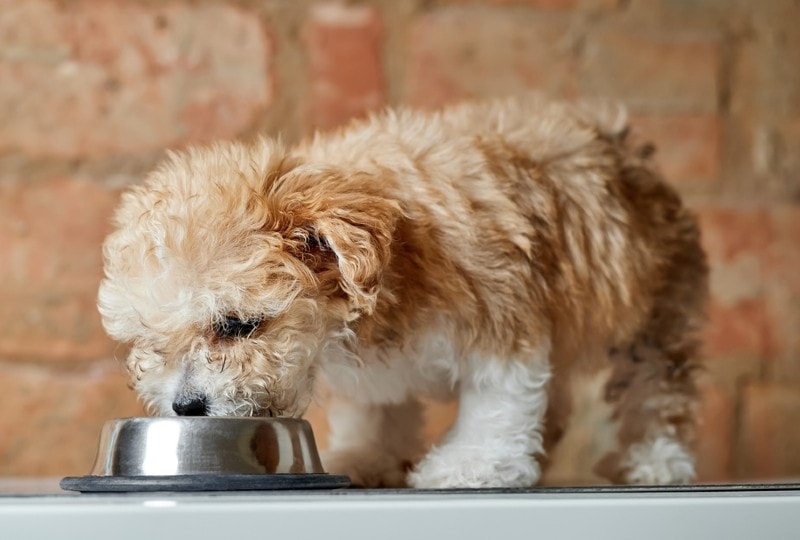
5. Utilize a HEPA Filter
As a Maltipoo owner, you can solve your allergy problem by running your HVAC system with a HEPA filter. High-efficiency Particulate Arrestance Filters help trap fine particles like pet fur and dander, thus removing them from the air that you breathe.
To ensure that your indoor air is free from these allergens, look for a HEPA filter equipped with the highest Minimum Efficiency Reporting Values (MERV) rating.
6. Consider Taking Over-the-Counter Antihistamine
If you adore your Maltipoo and cannot imagine a life without your furry friend, even though the dog might cause allergy flare-ups, antihistamines would be a viable solution. Antihistamines minimize the symptoms of allergies. However, before taking any antihistamine medicine, you should consult your family physician for advice and recommendations.

7. Consult an Allergist
If you are a Maltipoo owner and have tried to minimize the risk of allergies, and nothing seems to work, you might want to book an appointment with your local allergist. Allergy specialists will help determine the precise cause of your allergic reaction and recommend possible solutions.
In some instances, you might discover that your Maltipoo is not necessarily the cause of your allergic reactions. It could be something else like dust, pollen grains, and other small particles in the air you breathe in your home.
How to Keep Your Pet Happy & Healthy
Grooming your dog is an important aspect for caring for partially hypoallergenic dogs like Maltipoos. Your dog may have short hair, but they will require professional grooming every month to prevent the fur from growing too long and to keep them in shape. Do not forget to trim the hair covering the dog’s eyes.
Also, your pet should have a designated sleeping area during the day and at night. Properly caring for hypoallergenic dogs involves purchasing them a soft bed or providing them with warm old blankets to keep them safe and warm while sleeping.
Exercise is essential to their health as well as allergy control in your home. Therefore, take your dogs for a walk at least once a day, and ensure that they sleep throughout the night to give them a routine.
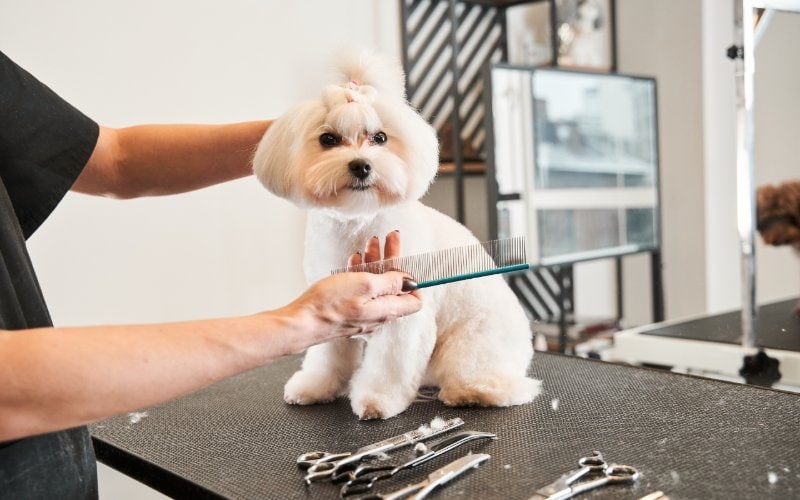
Conclusion
While no dog with a fur coat is 100% hypoallergenic, Maltipoo dog breeds come very close. They have very fine hairs, which do not produce too much dander and are an ideal choice for dog enthusiasts who suffer from allergy reactions.
However, veterinarians recommend that you spend some considerable time with the Maltipoo puppy in an enclosed space to ascertain whether your allergies will flare up before adopting.
If you have recently adopted a Maltipoo puppy but are allergic, you can minimize the effects by grooming them outside, delegating the grooming responsibility to non-allergic individuals, utilizing HEPA filters, taking antihistamines, or simply consulting an allergy specialist.
Featured Image Credit: Irsan Ianushis, Shutterstock

